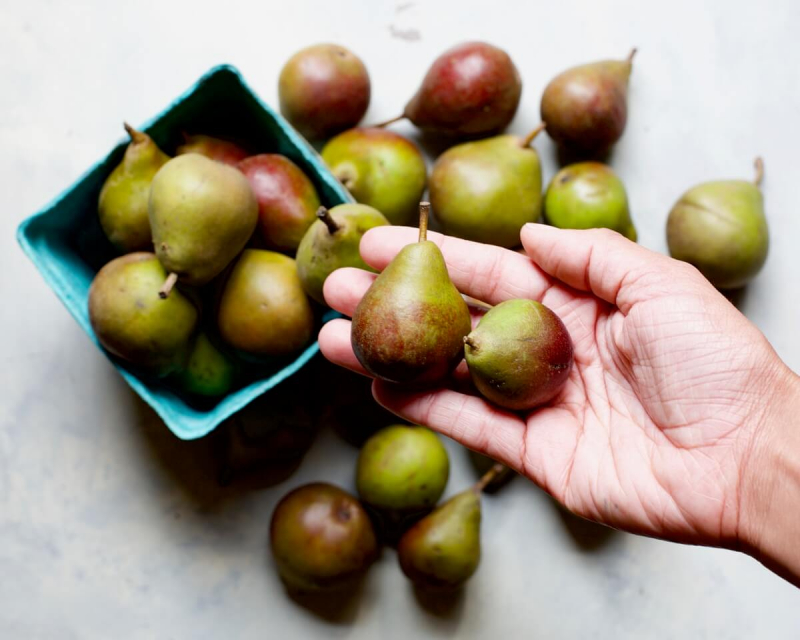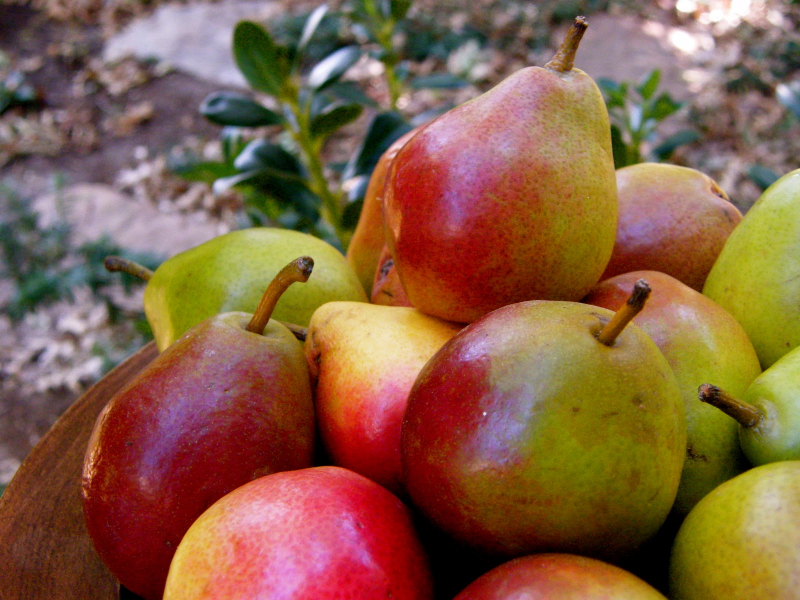Seckel pear

The Seckel was named after a Pennsylvania farmer who initially introduced it in the late 1800s. It was one among the types planted at Monticello by Thomas Jefferson, who remarked it "surpassed everything I had tasted since leaving France, and equaled any pear I had seen there". A. J. Downing, a distinguished horticulturist, ranked the flavor of the Seckel higher than that of European pear cultivars.
The Seckel pear tree is a tiny tree, growing to a height of 15-20 feet and a width of around 10 feet. Its bark is light grey and resembles that of an apple tree. Its white blooms blossom in the middle of spring. The tree is cold-hardy, frost-resistant, and fire-resistant. The Seckel is a winter pear that is picked in the fall and may be preserved for approximately 5 months. The fruit has a coarser grain than other European kinds and is highly delicious and crisp. They are relatively little in comparison to most other pears, measuring less than 3" in length and breadth.











